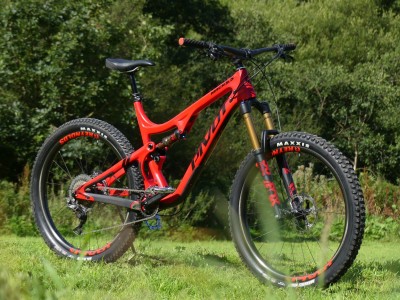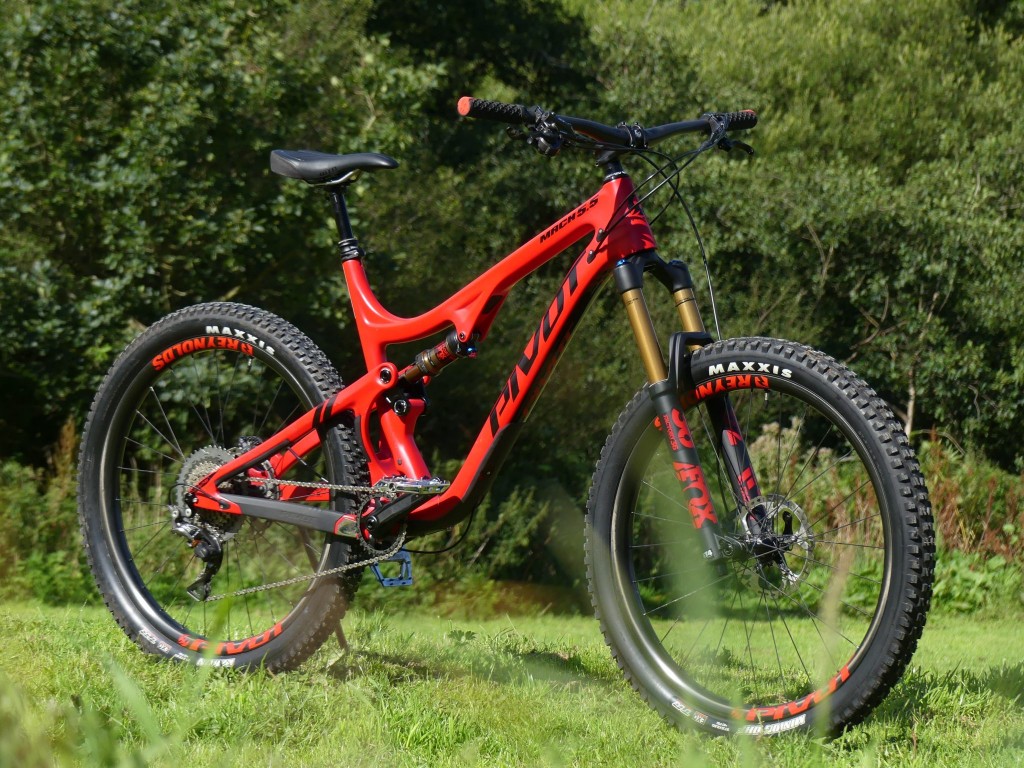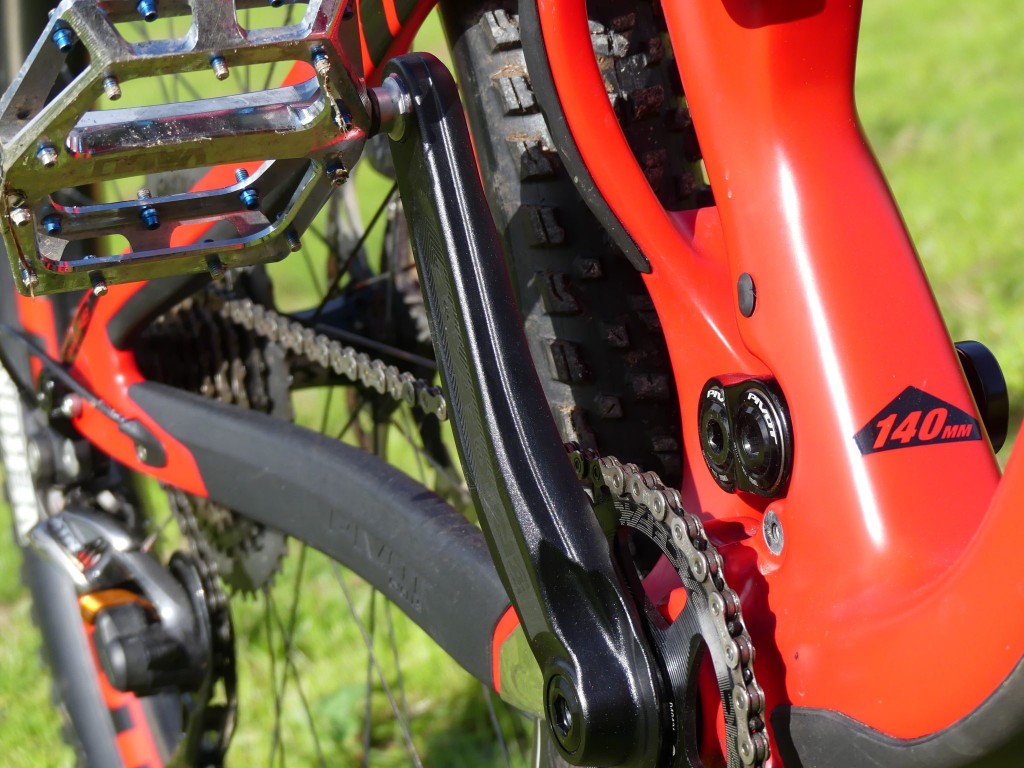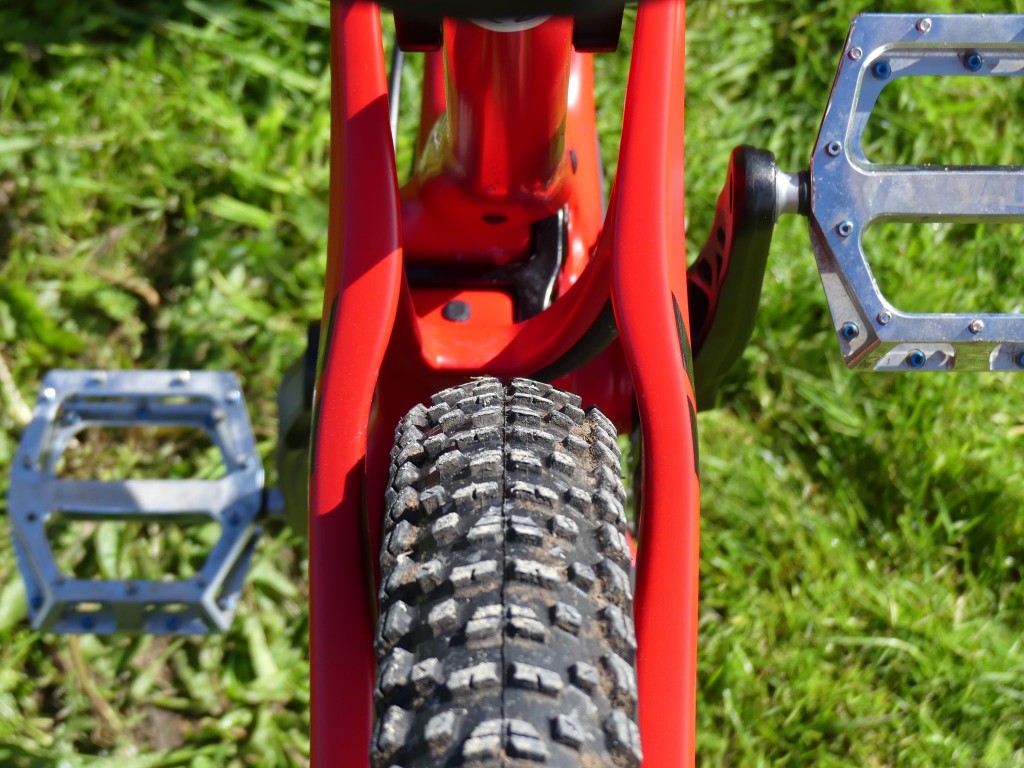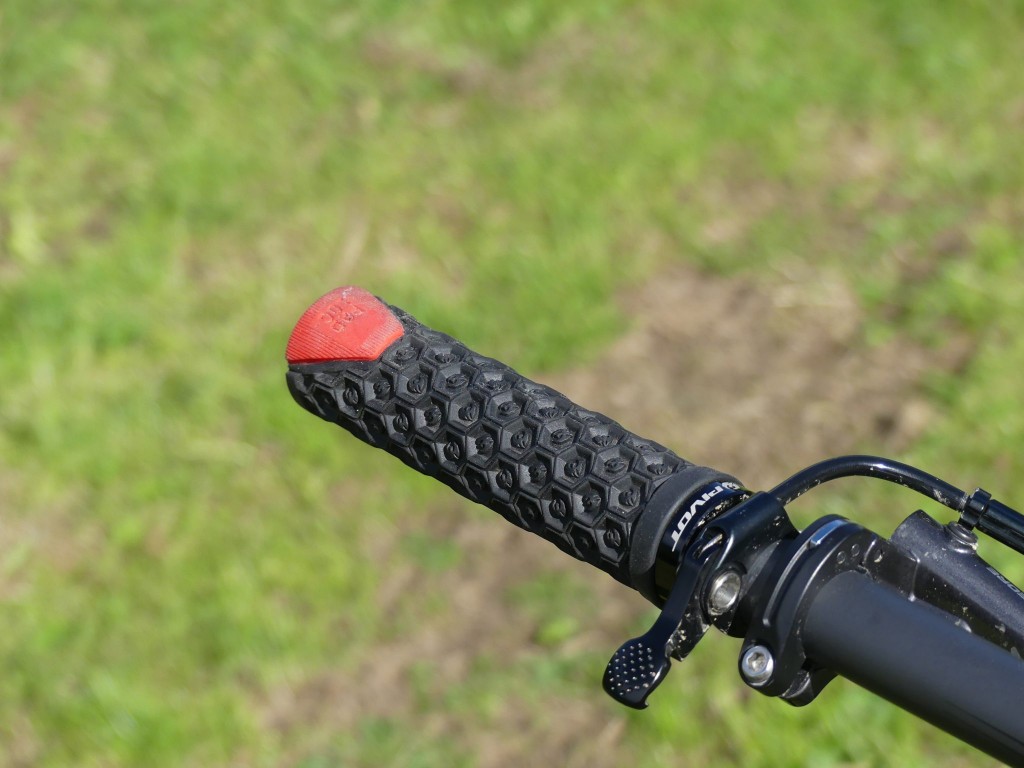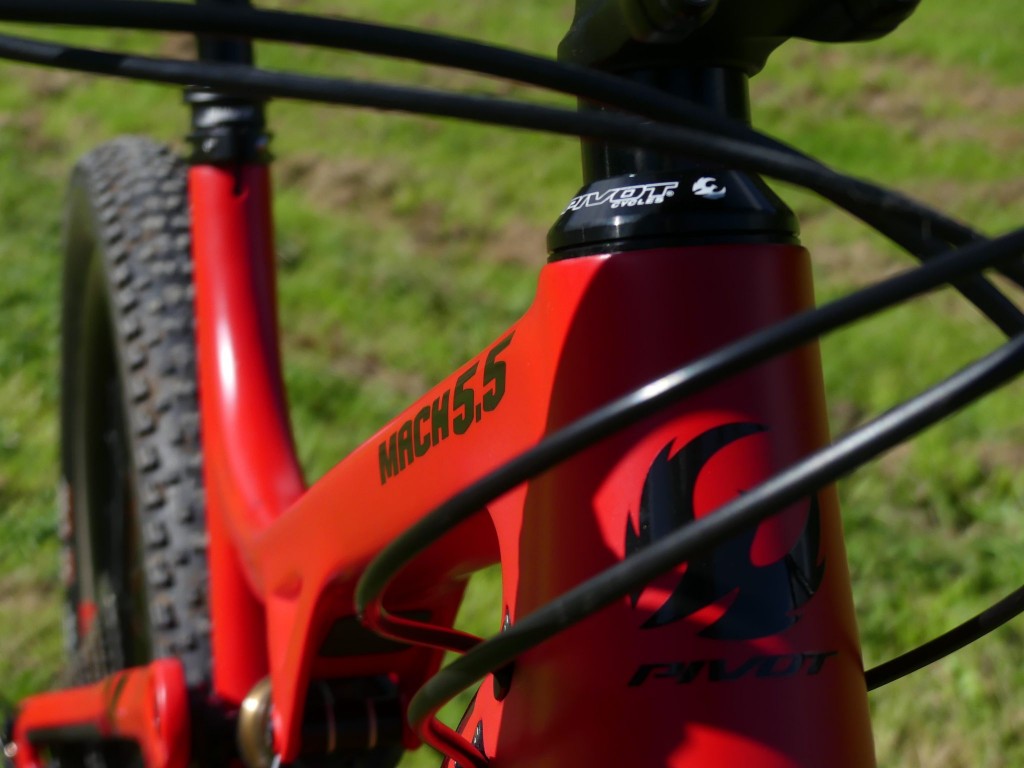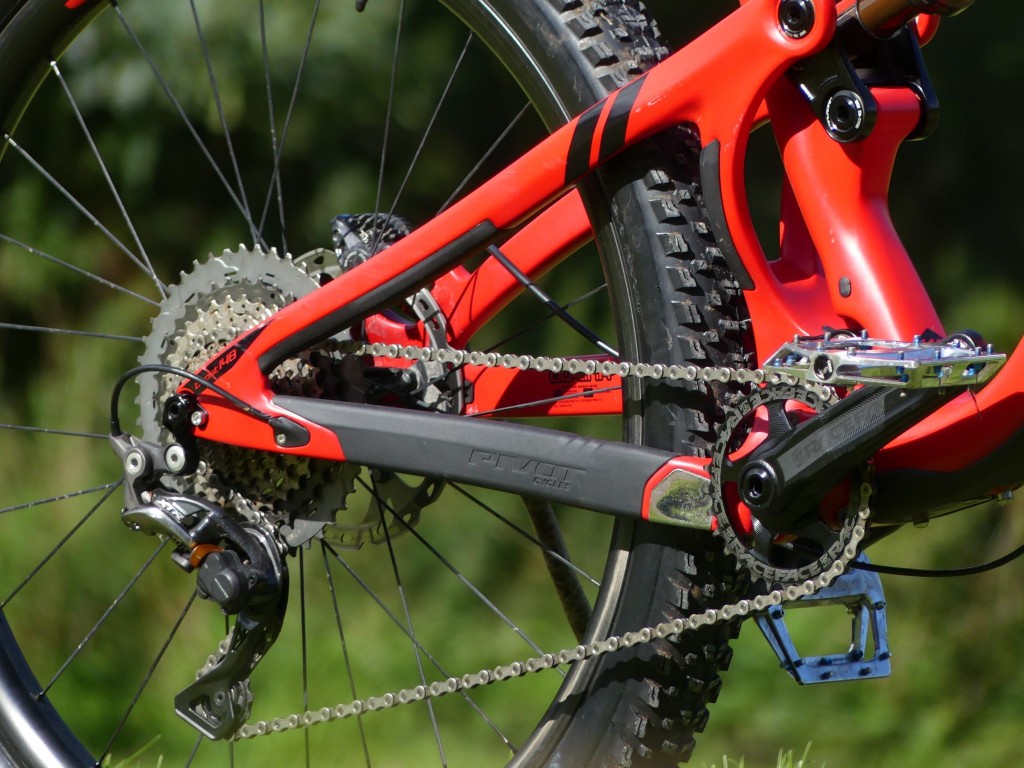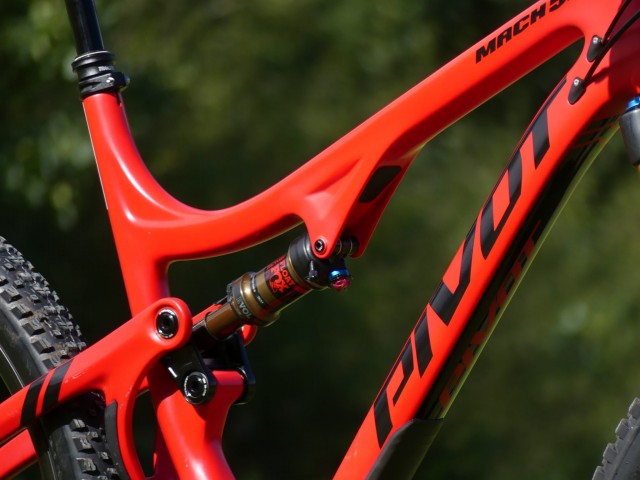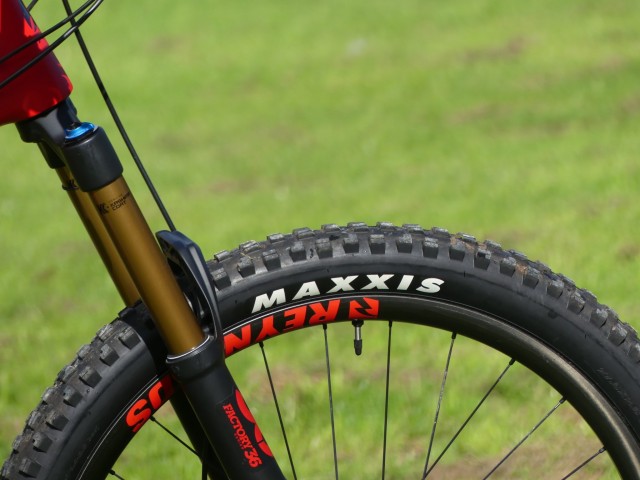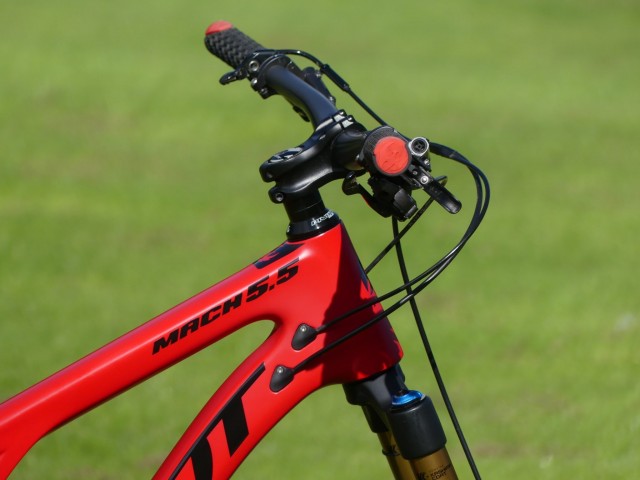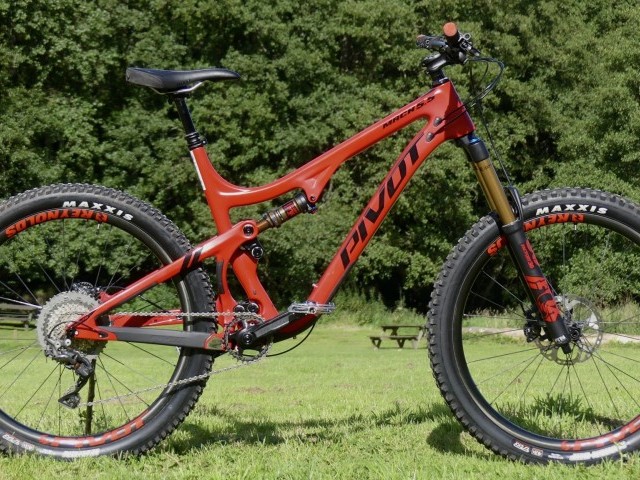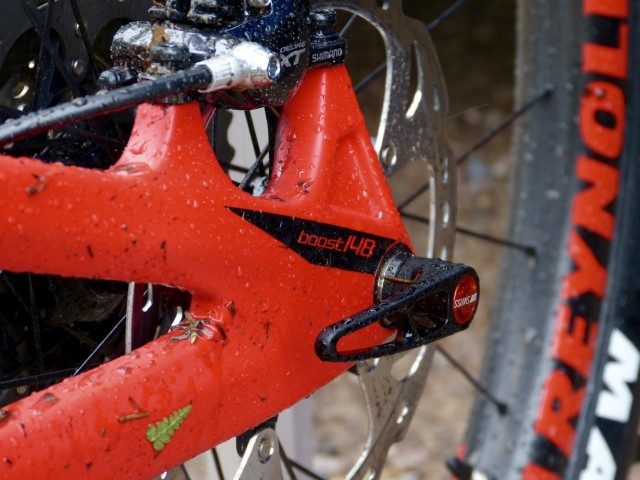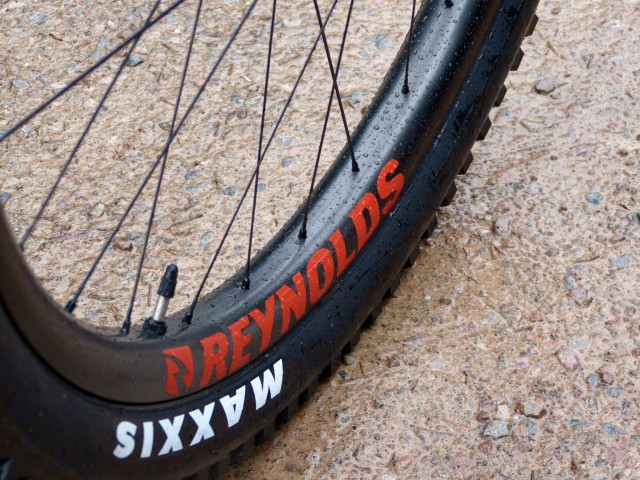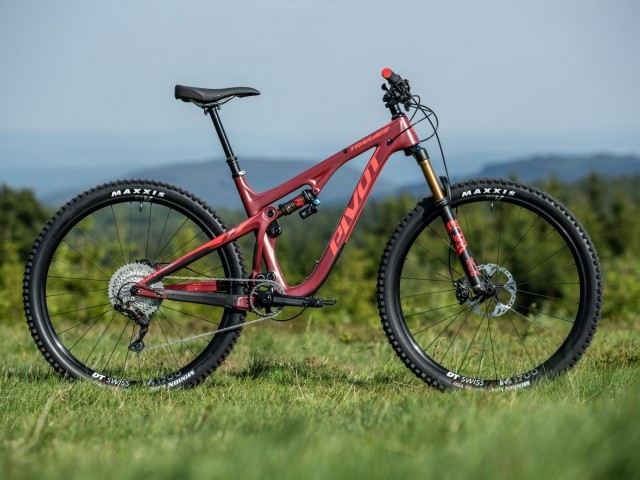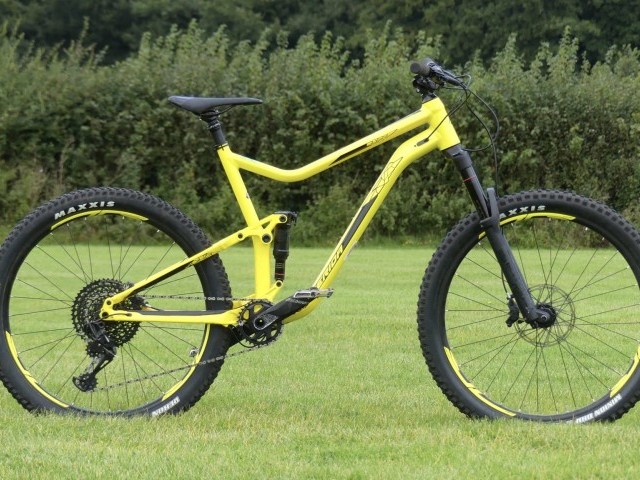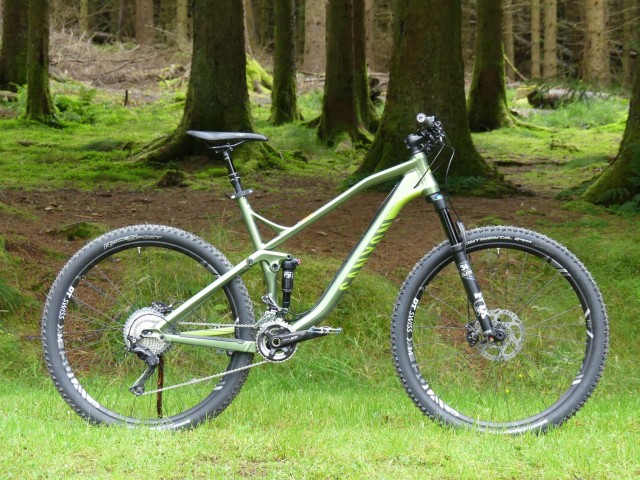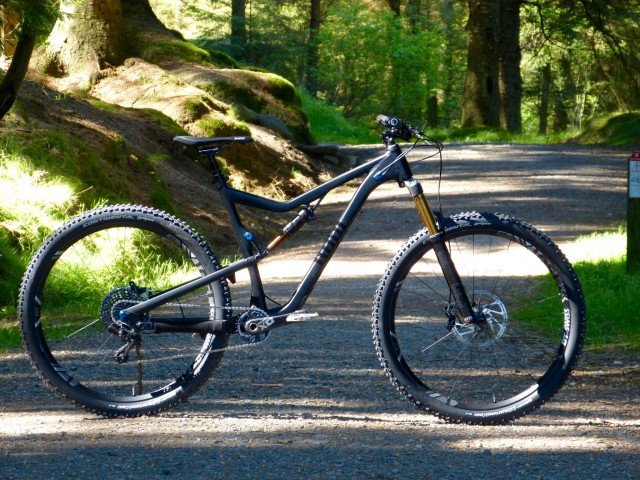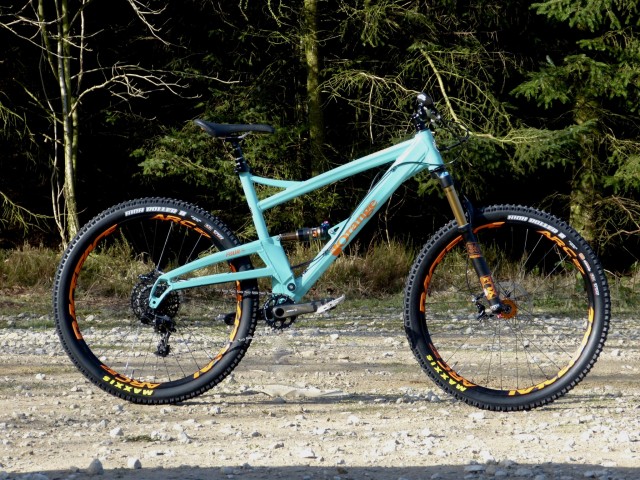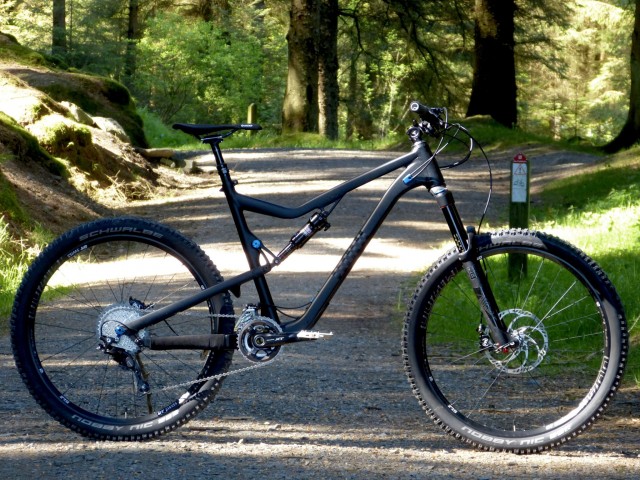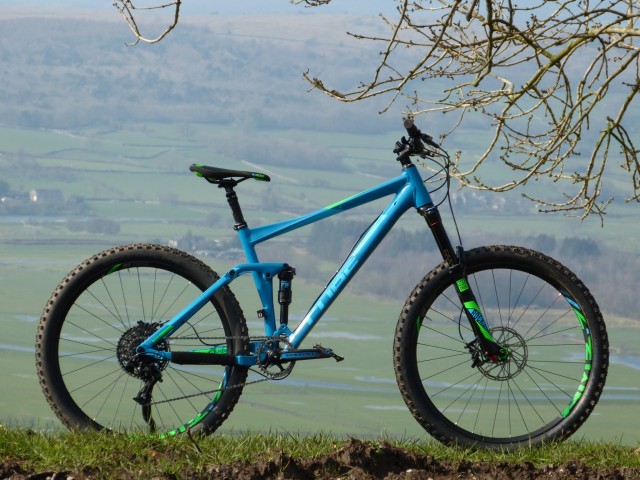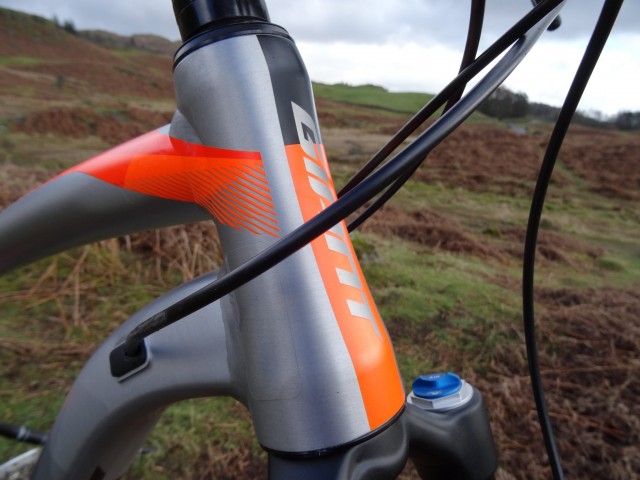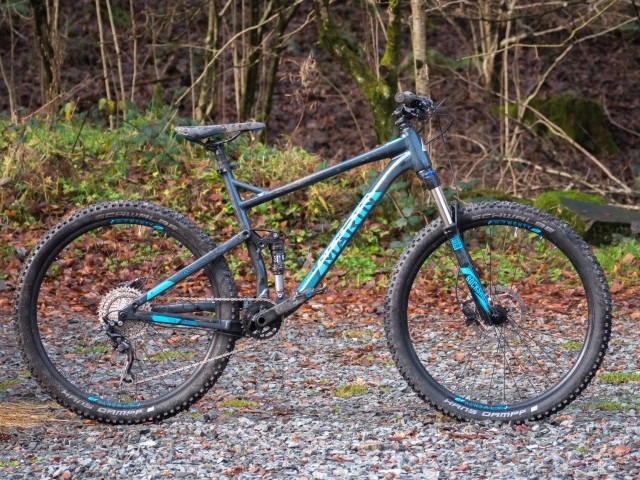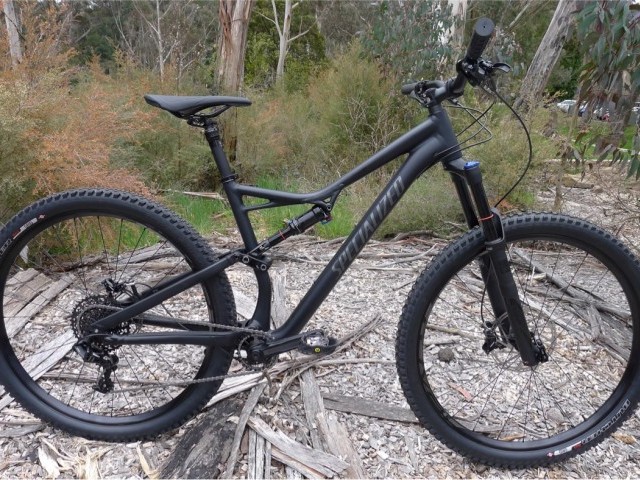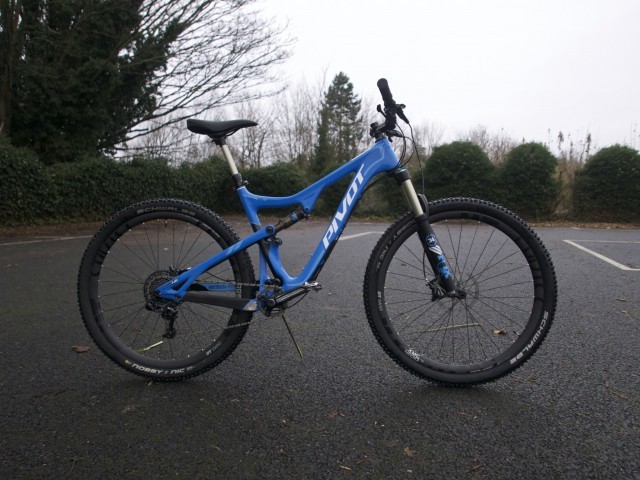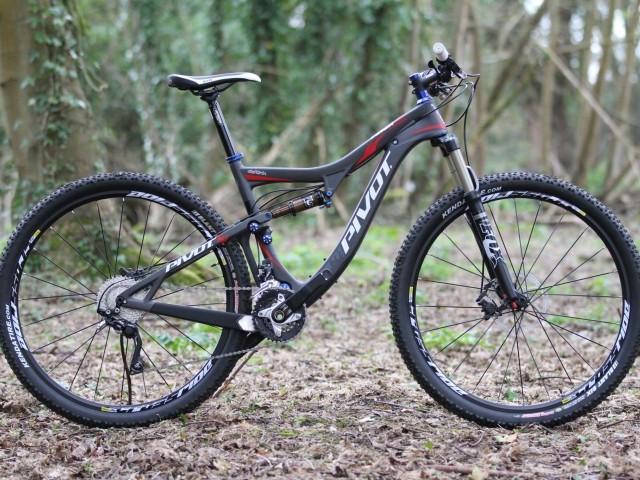At A Glance
Pivot appear to be on a non-stop bike producing mission. The last year has seen new models and revisions across the range including the well-received Switchblade and Firebird. As I write this they have done it again with the launch of their e-bike; the Shuttle, at Eurobike adding yet another bike to the range.
Buy Trail Bikes on
The Mach 5.5 dropped into the line-up a few months ago, and I was fortunate enough to get the first spin on it back then, which was enough to whet the appetite for what was yet again bound to be another impressive bike. The Mach 5.7 was a classic in the Pivot range, and with the more recent releases making it look a little dated it was obviously time for a revamp.
The 5.5 is described as the quintessential trail bike, and as such is aiming to be as much an all-rounder as any bike can be. For the price tag (it ain't cheap, prices start at £4850) and the claims, it has to stand up to more than a quick tyre kick and a spin round the block.
The fundamentals of the bike based on a DW link, as with all Pivots, and this delivers 140mm of travel via the Fox Float Factory DPS EVOL shock. This is balanced, though not in quantity of travel by a big set of Fox 36 Factory forks punching out 160mm of travel. Given the ability of a DW link to give a feeling of extra travel, it was decided to balance the books in this way.
The model here is the Pro XTR/XT 1X which retails in the UK at £5,800 but has the upgraded Reynolds 36mm rims and industry nine hubs (which are currently exclusive to the Mach 5.5) which boost things to £6750. Elsewhere the price can go as low as £4850 and as high as £9000 when Di2 gets involved.
So the specs on this version get an XTR and XT mix, which means XT throughout and an XTR rear mech. Race face cranks are a nice touch, as are the rather bling wheels. The Phoenix team components give a 55mm stem and big 800mm bars with Padloc Grips. Fox Transfer is the dropper of choice and travel depends on the size of frame chosen. The tyres are also of note, as we see 2.6 widths spec’d throughout the range, a clear sign that this is the way tyres are heading, well, at least for the next six months...
The package is high-end, with very little expense spared, and it's hard not to imagine this bike moving very fast in any direction, and on any trail.
On the Trail
Every brand has their idea of what the perfect trail bike should be, and there are myriad versions of trail bikes claiming to be 'the one' bike to do it all. Pivot surprised me with the choice of 650b wheels and 2.6 tyres, as I thought that 29 could be the wheel size of choice for such a tool.
The 36s up front really is a statement of competence from a bike, and with 160mm of travel, there is no doubting the intent for the 5.5. Elsewhere, a casual glance at the bike doesn't suggest it's going to move any more rapidly than the next bike. This, however, was an incorrect assumption, as the 5.5 has an acceleration and turn of speed rarely, if ever, found on a bike this. Now the stiffness in the frame plays a part for sure, as does the DW link system, which does a great job at keeping pedal efficiency. The real star of the acceleration show is the Reynolds rims and the industry nine hubs, which are like a nitrous boost for an already rapid machine.
The direct feeling of leg power converted to speed is intoxicating, and it simply blisteringly fast. Now, I know xc hardtails are faster and all that, but as I smashed my way up climbs gathering Strava PBs, I knew I was carrying a bike that was going to also let rip on the descents. The tyre choice that I had assumed would be draggy was pretty unnoticeable, and the additional traction on the climbs was welcome.
Technical climbing was dealt with in an efficient, gravity-defying rampage. The suspension deals with square edge hit and pedalling continues smoothly with little interference. For more technical sections the sheer turn of speed allows for rapid acceleration into steep steps and hops, and progress continues, relentlessly.
So yes, you get the idea, it's flipping rapid, and I love that aspect of the bike, so what about when it gets to the good stuff? Well, I presume the 5.5 was bred to be fed a diet of full speed singletrack where corners blend into corners for miles on end. For it is manoeuvrability where the 5.5 shines and coupled with its speed, it really performs on sinuous trails where the limit is probably the processing speed of my brain more than anything else.
It’s not just smooth trails though, the 66.5 allows for some attack through the rough stuff, and with 160mm of travel, it's going to take a lot to make it cough and splutter. Interestingly, a bike with a 160mm fork tends to enjoy plough through terrain, whereas the 5.5 is a more nimble, and light vehicle, and prefers a more stylish approach to challenges, happy to pop and hop its way through issues.
It all sounds too good to be true I suppose, but no bike is perfect. The one area where things get a bit sticky is when the downhill gradient starts to steepen, and chinks in the armour begin to show. The not super slack head angle and long, but not super long reach combined with a 55mm stem does not allow for dangerously steep trails to be tamed without a fight. Feeling a little short, and my hands a little too far forward towards the front axle, pushing round steep hairpins, or rolling into plummeting rock chutes was a little sketchy.
Also being a tall rider, I am a fan of slightly longer chainstays for stability when things get wild and fast, and this is something Pivot doesn't feature in its playbook.
It's important to put these descending limitations into context, and the gradients and technicality of the trail, which causes issues are well down the daft and stupid end of mountain biking. The 5.5 will do nearly all my riding happily and get me there faster and more easily.
An issue that became apparent after some poor weather was the wear on the paint either side of the main linkage. With dirt sitting on top of this, it acts as a grinder every time it moves, wearing away at the paint. For those sensible people who live somewhere sunny and dry, it's all good, but it isn’t so UK proof. Fortunately, Pivot has thought about this, and a mudguard protector is available to keep dirt at bay.
With a kink in the seat post, smaller sizes have some limits on the length of drop, and the amount of post insertion available, so this is worth checking out carefully to get the best fit.
2.6? Well, I think this could be the sweet spot. The Reckon for my trails is a terrible tread, and a swap out to another Minion suddenly open up the capability of the bike further. Without the huge volume of a 2.8 or 3.0 tyre, the 2.6 feels more familiar, while giving more grip, and a fist full of psychological confidence when you look down and see the massive rubber working for you.
Overall
Having ridden most of the Pivot range, this has become my favourite. The Firebird is a very big travel machine, and the Switchblade's personality is just a little highly strung. The 5.5 flatters both your fitness and your technical finesse in equal measure and only comes unstuck if you go full enduro and hunt out the steepest and roughest terrain. The mix matched suspension, the 2.6 tyres and the phenomenal wheels add together to make it hard to argue that this is not a quintessential trail bike. The price puts this out of the reach of many, but for those who demand the best and with no expense spared, this is for you.

This review was in Issue 50 of IMB.
For more information visit Pivot CyclesRelated
By Ewen Turner
Ewen Turner is a self-confessed bike geek from Kendal in the Lake District of England. He runs a coaching and guiding business up there and has a plethora of knowledge about bikes with an analytical approach to testing. His passion for bicycles is infectious, and he’s a ripper on the trails who prefers to fit his working life around his time on the bike.

